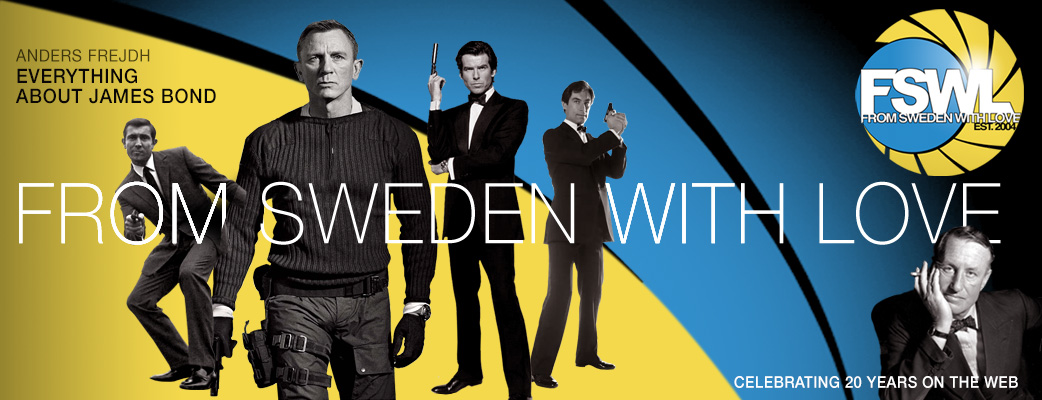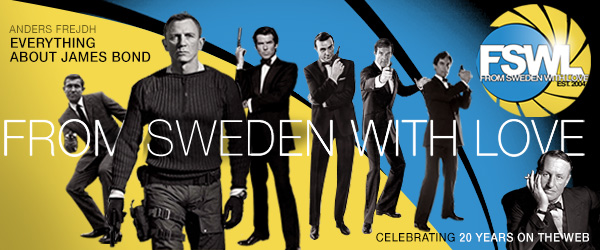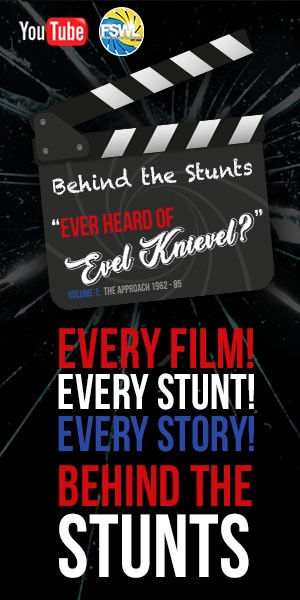Website last updated: 26-4-2024
Home
Competitions
Event
FSWL Merchandise
In Memoriam
Interviews
James Bond 007 articles
James Bond 007 collection
James Bond 007 films
James Bond 007 games
James Bond 007 literature
James Bond 007 news
James Bond 007 products
James Bond 007 shop
James Bond 007 stars
James Bond Fan Clubs
Swedes in the Bond films
The Oscars overlooked Barbara BroccoliŌĆÖs new film Till. You shouldnŌĆÖt.
By: John Cork
Published:
2023-02-07
2023-02-07
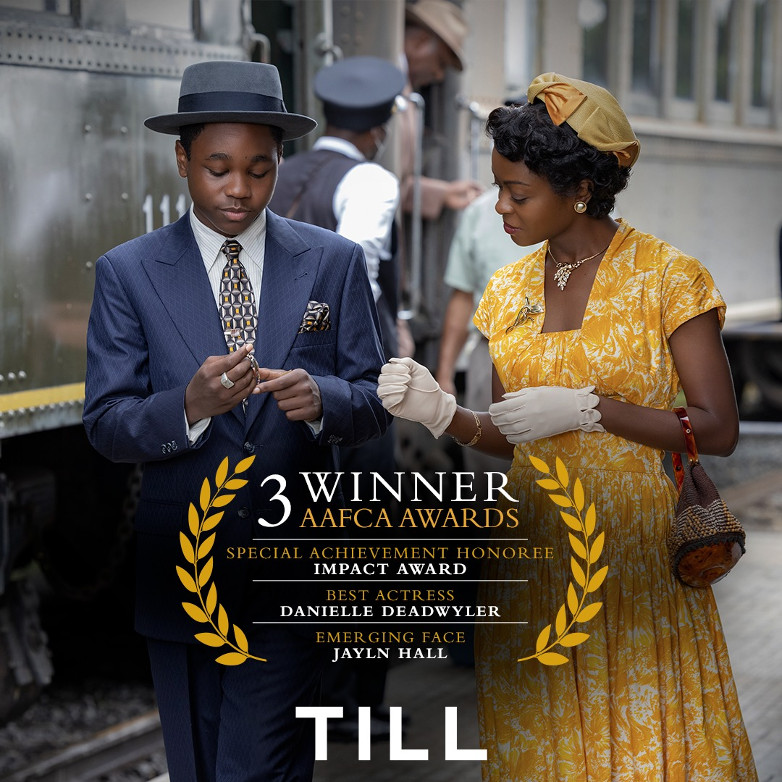
Till tells the story of Emmet Till, a name that should be familiar to anyone who has studied the Civil Rights movement in America, and his mother, Mamie Till Bradley, who fought for justice after his death. Till, Black, raised in Chicago, went to Mississippi the summer he turned 14 to stay with family. He returned in a coffin, lynched because he was accused of making sexual comments to a married White woman working in a local store.
The film is brilliant in its powerful look at the humanity of young Emmett (Jayln Hall), of his great-uncle, Mose Wright (John Douglas Thompson), and, vitally, Mamie Till Bradley (Danielle Deadwyler). All the supporting roles are excellent. Whoopi Goldberg plays EmmettŌĆÖs grandmother, Alma Carthan, with a weary sadness that speaks to the burden of history on the womanŌĆÖs soul.
That Danielle Deadwyler did not get nominated for Best Actress, and Chinonye Chukwu was overlooked for Best Director leaves me, for one, shaking my head with bafflement.
What director Chukwu does so confidently is simply allowing the camera to stay with Deadwyler as we watch Mamie Till Bradley transform her grief into tempered steel resolve, even as those around her crumble with the horror of the act of terror perpetrated on this young man.
Extended preview trailer for Till produced by Barbara Broccoli:
Why is this story, of all the stories of lynchings in America, so important? It is because Mamie Till Bradley and those she gathered around her ŌĆö despite relentless attacks from White Southern racists and their sympathizers ŌĆö demanded that the public should know what happened.
The lynching and its aftermath became a media event. The trial may have acquitted the men involved of murder, but the racism and indifference to Emmett TillŌĆÖs life was put on trial in such a way that the practice of lynching essentially ended. Mamie Till Bradley made America look at her sonŌĆÖs body, made Mississippi and the nation look at what we had become.
The movie tells the story beautifully and with important nuances.
If anyone reading this article recognizes my name, it is because IŌĆÖm known by a few in the small circles of Bond aficionados for my work on Bond-related projects. Yet, I have one further great passion in my life: The American Civil Rights movement. Having grown up in Montgomery, Alabama, I was fascinated and moved by the history there. This inspired me to research and write the screenplay for the film, The Long Walk Home (1990), set against the Montgomery Bus Boycott.
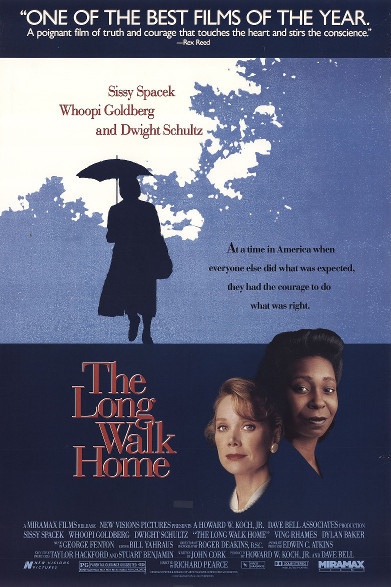
The film poster for The Long Walk Home. Copyright ┬® 1990 Miramax. All rights reserved.
The aforementioned boycott began just barely over three months after Emmett Till was lynched in Mississippi, just over two months after the jury found the men who killed Till ŌĆ£not guilty.ŌĆØ Both the Bus Boycott and TillŌĆÖs death were well-covered in half-hour segments of the landmark PBS documentary series, Eyes on the Prize, in 1987.
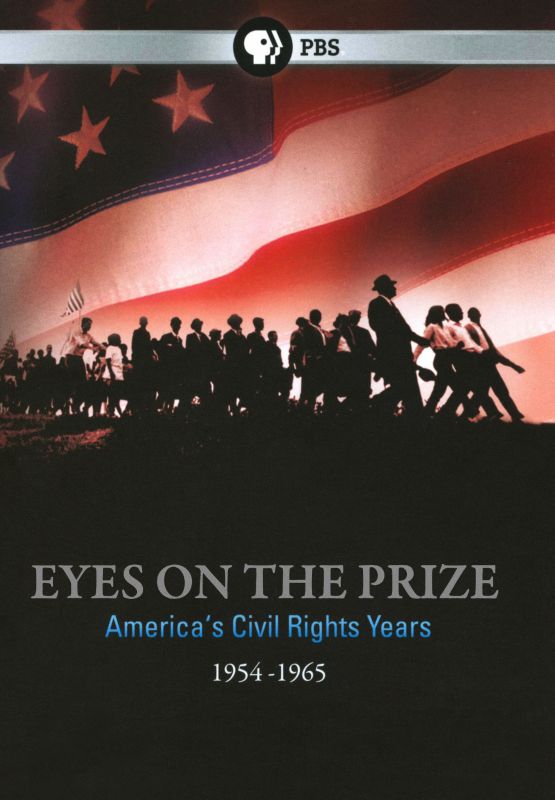
The poster for Eyes On The Prize. Copyright ┬® 1987 Public Broadcasting Service (PBS). All rights reserved.
In fact, the airing of that episode of Eyes on the Prize not only prompted me to look back at my own familyŌĆÖs memories of that time (highly fictionalized in the film that came from it), but the show prompted a close friend and fellow Alabamian, Bruce Scivally, to research and write a screenplay about the lynching of Emmett Till, entitled, GŌĆÖbye, Baby. Bruce would later collaborate with me on the documentaries produced for the Bond DVD and Blu-ray releases, as well as co-author James Bond, The Legacy with me. As the years unfolded, I kept up with different iterations of the Till story, novels, plays, and research articles, eventually becoming aware of the work of an underfunded Black filmmaker, Keith Beauchamp, who was gathering important interviews. When BeauchampŌĆÖs documentary The Untold Story of Emmett Louis Till finally arrived, it not only humanized young Emmett, but revealed aspects of the case that had never been explored, such as the involvement of Black men working with the White racists in EmmettŌĆÖs death.
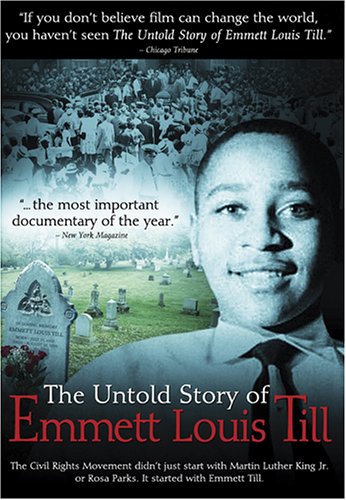
The DVD cover for The Untold Story Of Emmett Till. Copyright ┬® 2006 Velocity / Thinkfilm. All rights reserved.
When I managed to work in a reference to the lynching of Emmett Till into my introduction for the 2017 Vintage Classics hardback edition of Ian Fleming's Live and Let Die, I never thought that there would be a film on the subject from EON Productions that somehow further merged these very separate quarters of my life. How that came to be is an interesting story (and one I only know from the outside looking in).
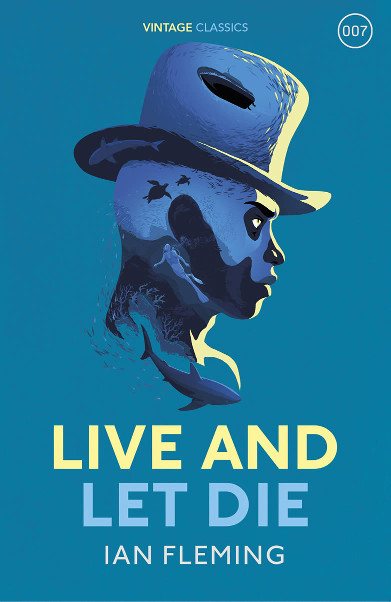
The special edition cover of Live And Let Die by Ian Fleming with John CorkŌĆÖs introduction. Copyright ┬® 2017 Vintage Classics. All rights reserved.
Producer Fred Zollo (who had worked on two previous films about the Civil Rights struggle in Mississippi ŌĆö 1988's Mississippi Burning and 1996's Ghosts of Mississippi) worked with Beauchamp to bring the story told in his documentary to the big screen. Getting TillŌĆÖs story made was going to be a struggle. Aside from Bruce ScivallyŌĆÖs script, numerous other writers over the years had tried to tackle the ugly tale of the lynching, and for years, many executives in Hollywood confided in me that they had heard the idea pitched more than once. With the involvement of ZolloŌĆÖs ex-wife Barbara Broccoli (with whom he has produced many Broadway and West End shows), Whoopi Goldberg, and a worthy script ŌĆö very faithful to the known facts ŌĆö by Michael Reilly collaborating with Keith Beauchamp, the project moved forward. Eventually, the director Chinonye Chukwu contributed extensively to the final drafts.
The involvement of Whoopi Goldberg shouldnŌĆÖt surprise anyone. GoldbergŌĆÖs commitment to truth, history, and Civil Rights is well-documented. I have not had contact with Whoopi in way too long, but she had starred in The Long Walk Home, and we spent hours together in Montgomery, Alabama in the summer of 1989 during the shooting of the film. For others, the involvement of Barbara Broccoli might be more of an eye-opener. Her father, Bond producer Albert R. Broccoli, famously steered clear of social issue films after the financial disappointment of The Trials of Oscar Wilde in 1960. Yet, the first time I ever met Barbara Broccoli was in the lobby of the Directors Guild of America in 1990 for a screening of The Long Walk Home, part of an evening celebrating Whoopi Goldberg. Barbara Broccoli and Whoopi Goldberg go back over thirty years.
So, what does all this have to do with James Bond?
Yes, Barbara Broccoli was a producer on it, and that should raise a twinkle of interest from Bond fans who visit this website. Those of us passionate about the fictional world of 007 should be interested in the kinds of stories that move those who make the Bond films.
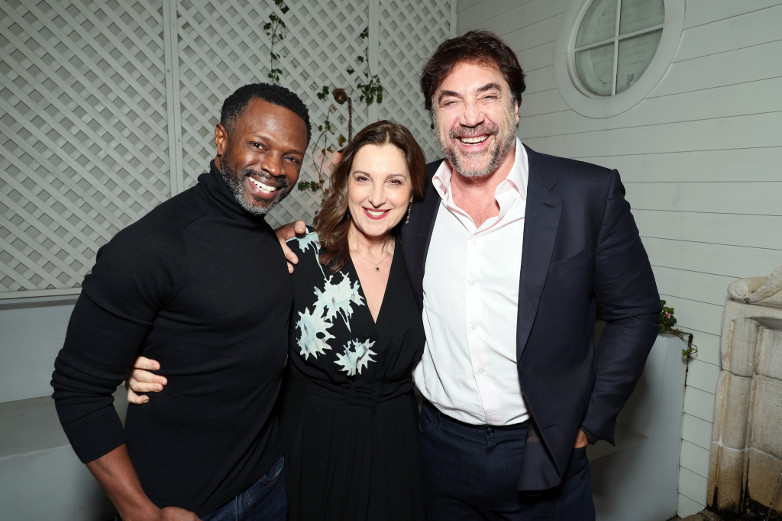
Producer Barbara Broccoli with actors Sean Patrick Thomas and Javier Bardem at a special screening of Till in London.
But there is a little more, even more than the co-author of James Bond, The Legacy having once written a script on the same historical moment, and that is the complex and tangential connection between the world Emmett Till lived in, and the world in which the literary James Bond was created.
The death of Emmett Till took place in the America that Ian Fleming was visiting to research his fourth Bond novel, Diamonds are Forever, in August 1955. Nearly two years earlier, Fleming had visited the States to research Live and Let Die, a novel very much set against the growing racial tensions of America circa 1953. In that novel, Fleming loosely ties the notion of Black discontent with the status quo to Soviet influence operations. While the Soviets were happy to point out the racial inequities in America (as the Nazis had done during WWII), the way racism permeated the nation was motivation enough for resentment. The notion of Soviet influence was so widely accepted among so many segregationists that Mamie Till Bradley had to publicly defend herself from the claims that Communists were funding her campaign for justice for Emmett in 1955.
By the time of that 1955 trip to the U.S., Fleming was sensing the change in attitudes about race, a rising sense of discomfort. In Diamonds Are Forever (written in early 1956) Fleming makes an oblique reference to how Bond had discussed race in the nation just two years earlier in Live and Let Die. In the British edition of that novel, Bond and other characters had liberally used a racial slur, one which was not considered nearly as offensive in the UK for many decades on. FlemingŌĆÖs U.S. editor, Al Hart, requested that language he found offensive, including the slur, be deleted, and Fleming agreed. In Diamonds Are Forever, Bond thinks back on getting told by Felix Leiter (awkwardly and offensively) that his language was not acceptable:
Bond had a natural affection for coloured people, but he reflected how lucky England was compared with America where you had to live with the colour problem from your schooldays up. He smiled as he remembered something Felix Leiter had said to him on their last assignment together in America. Bond had referred to Mr. Big, the famous Harlem criminal, as 'that damned nigger'. Leiter had picked him up. "Careful now, James," he had said. "People are so dam' sensitive about colour around here that you can't even ask a barman for a jigger of rum. You have to ask for a jegro."
The attempt at humor falls flat for me (and I suspect virtually all modern readers), but it is reflective of the era that in some small, begrudging way, the Whites who had benefitted the most from the American Dream needed to begin the slow, long-overdue process of affording the rest of the fabric of the nation some modest level of respect. The ugly mirror that the trial of TillŌĆÖs killers held up to the country was an important part of that slow, unfinished process, and the passage from Diamonds Are Forever reflects just how casually racism had permitted White society.
I also think of exactly what TillŌĆÖs murderers accused him of doing: of making sexual comments to a woman. If Till did it, this was seen as a crime by White racists in Mississippi. I have wondered if in their later years, TillŌĆÖs killers ever watched a Bond film and enjoyed James Bond engaging in his brand of sexual humor, and if they ever reflected that they had killed a young teen based on the accusation he had done the same in his own awkward way? I wonder if they ever heard the term ŌĆ£license to killŌĆØ in reference to 007 and thought to themselves that as White men in Mississippi in 1955 targeting a Black teen, society had granted them a far more real license to take the life of another?
Finally, I think of lifeŌĆÖs tragic complexities that ended up taking TillŌĆÖs life, and how the Bond novels and films are so often focused on simplifying those complexities for us, of washing away the gray areas, illuminating the larger-than-life villains, and how Mamie Till Bradley, in her own way did the same. She put a spotlight on the sickening underside of Jim Crow in America. She exposed cold-blooded killers for who they were. She could not blow up their lair, dispatch them with some ironic death and witty comment, but she is every bit the hero James Bond has ever been, every bit as strong, every bit as determined.
All text. Copyright ┬® 2022 John Cork. All rights reserved.
Tags:
#barbara_broccoli
#bond_related
#eon_productions
#john_cork
#mgm
#reviews
#united_artists
Tweet
